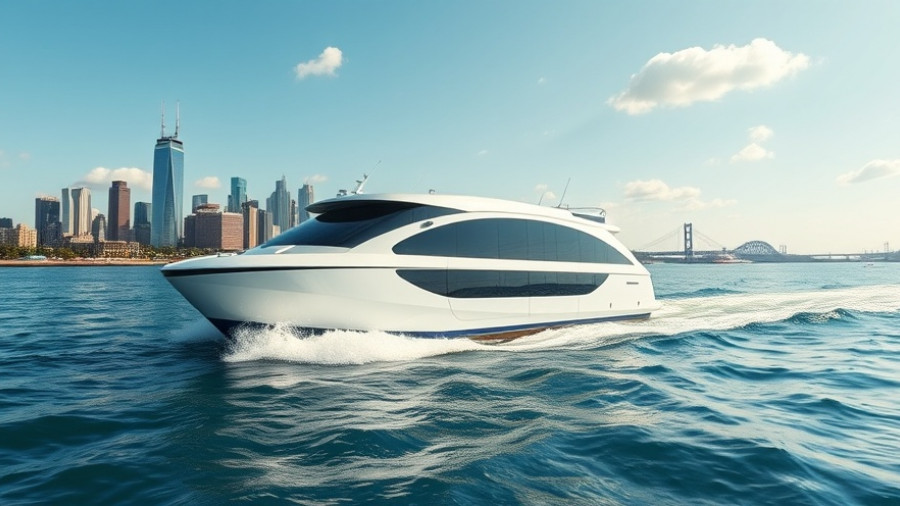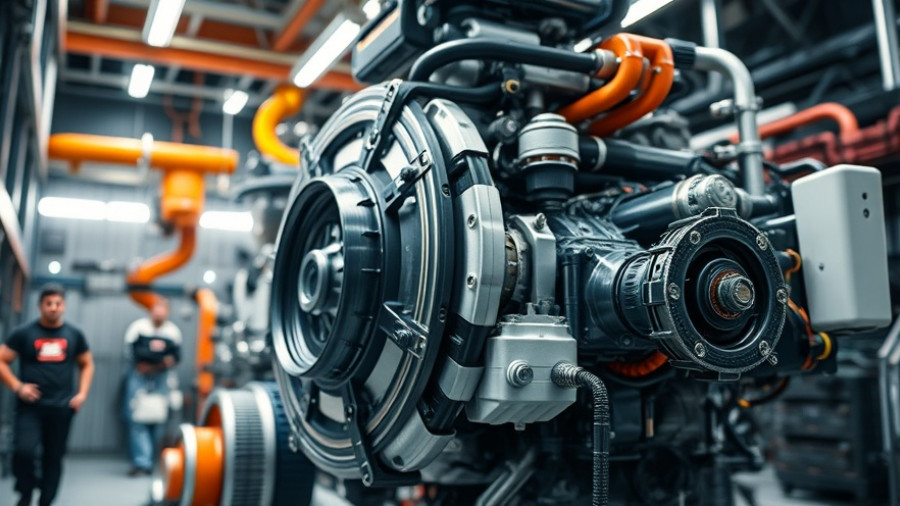
Japan's Technological Leap in Turbocharger Production
In a significant advancement for Japan’s manufacturing sector, the first Everllence TCT turbocharger—specifically the TCT40 model—has officially rolled off the production line at the Mitsui E&S Co. Ltd. factory in Tamano. The launch of this turbocharger marks a pivotal moment in local manufacturing, symbolizing the deep-rooted partnership between Mitsui and Everllence, which dates back to 1981.
Insights from the Launch Ceremony
The production line event was attended by industry leaders, including Ichiro Tanaka of Mitsui and Dr. Daniel Struckmeier from Everllence Japan. According to Tanaka, this new endeavor aligns with their goal of providing high-quality, domestically produced parts—a request echoed by many Japanese marine engine manufacturers who prefer local sourcing for trust and efficiency. Struckmeier added, "Local production helps build trust, ensures faster delivery, and aligns with customer expectations for domestic sourcing," highlighting the shift towards local manufacturing.
The Evolution of the TCT Turbocharger Series
The TCT series, which began with its launch in 2019, is designed to cater to the evolving needs of modern marine propulsion systems. It replaces the older TCA turbocharger as part of a forward-thinking strategy in the two-stroke engine market. The turbocharger series is equipped with a newly developed radial compressor and axial turbine, both optimized through advanced simulation technologies. These enhancements result in a lightweight design offering superior efficiency across various engine types and fuel options.
Key Features and Benefits of TCT Turbochargers
TCT turbochargers are tailored for use in engines ranging from 5.5 MW to 24 MW. With features such as long time between overhauls (TBOs), reduced maintenance costs, and high performance bearings, these turbochargers are built for longevity and efficiency. Notably, they demonstrate:
- High specific flow rates, which leads to a compact and lightweight design.
- Lowest noise emissions, contributing to a better operating environment.
- Optimal matching capabilities to new exhaust gas after-treatment systems required for IMO Tier III operations.
Future Comparisons and Challenges in Marine Engineering
The introduction of the TCT series may parallel other industry advancements, particularly as competitiveness heightens within the maritime sector. For instance, as other manufacturers shift towards sustainable technologies, such as hydrogen-fueled systems, it’s crucial for Mitsui to remain agile in its production and technology enhancement. The key will be balancing innovation while addressing the market's need for proven, reliable technologies.
The Global Context for Japanese Marine Engineering
With growing demand for efficient marine solutions prompted by tighter environmental regulations, Japanese companies like Mitsui are well-positioned to meet these challenges. As they ramp up production of the TCT series, the focus on local production will likely resonate well with clients seeking reliability and swift delivery. As Struckmeier notes, the partnership with Mitsui highlights the strength and potential of the TCT series to enhance their market offerings further.
Considerations for Future Developments
Looking ahead, it will be of utmost importance for Mitsui E&S Co. Ltd. to continue innovating its turbocharger technologies while facilitating sustainable production practices. As regulatory requirements become stricter, companies must adapt rapidly to stay competitive. The TCT turbocharger's development is not just a technological success but also a testament to how collaboration within the industry can lead to beneficial outcomes for broader marine engineering.
In conclusion, the successful roll-out of the Everllence TCT turbocharger in Japan signifies a progressive step in local manufacturing capabilities. It not only meets domestic needs but also positions Mitsui E&S Co. Ltd. as a critical player in global marine engine production.
 Add Row
Add Row  Add
Add 




Write A Comment